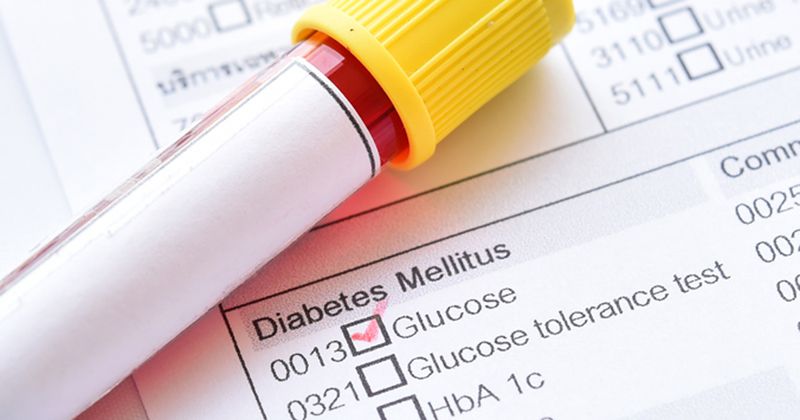Progressive beta cell dysfunction may be primary driver of impaired glucose tolerance
Loss of beta cell function serves as the basis for progression from normal glucose tolerance to impaired glucose tolerance, but insulin clearance may not be a major factor in the development of dysglycemia, according to a speaker.
In a presentation at the World Congress on Insulin Resistance, Diabetes & Cardiovascular Disease, Steven E. Kahn, MD, professor of medicine in the Division of Metabolism, Endocrinology and Nutrition at VA Puget Sound Health Care System and the University of Washington and director of the University of Washington Diabetes Research Center, discussed research that analyzed the relationships between insulin resistance, insulin secretion and insulin clearance with glucose tolerance, as well as the role beta cell dysfunction plays in the loss of glucose tolerance and the development of type 2 diabetes.

“I believe that it’s the beta cell and the dysfunction of the beta cell that is the basis for progression from normal glucose tolerance to impaired glucose tolerance and then to type 2 diabetes,” Kahn said during a presentation. “It also explains the progressive dysglycemia during treatment with glucose-lowering medications.”
Beta cell dysfunction as a driver for impaired glucose tolerance

Several studies have shown a correlation between glucose tolerance and beta cell function. In a cross-sectional study published in Diabetologia that analyzed a group of Japanese American adults living in the Seattle region, a 40% reduction in oral disposition index, which is a measure of beta cell function, was associated with a decline from normal fasting glucose levels to impaired fasting glucose, and a 90% oral disposition index decrease was linked to fasting glucose levels in the type 2 diabetes range. Using the same dataset, researchers used the homeostasis model assessment 2 of insulin resistance (HOMA2-IR) to analyze the relationship between insulin resistance and glucose tolerance. While insulin resistance was higher in people with impaired fasting glucose and type 2 diabetes compared with normal fasting glucose, Kahn noted the absolute differences were small.
“[This is] suggesting that it is the changes in the beta cell response, rather than the insulin sensitivity, that drives glucose upward,” Kahn said.
Similar findings have been observed in longitudinal studies. In a study published the Journal of Clinical Investigation, researchers conducted blood and laboratory tests in a cohort of Native Americans living in the Gila River community in Arizona. Of the cohort, 48 participants had clamps and oral glucose tolerance tests conducted three times over a period of 5 years. Within the subgroup of 48 participants, 31 had no change in beta cell function and maintained their glucose tolerance during all three glucose measurements. Kahn noted in the group that maintained beta cell function, the beta cells were able to maintain normal glucose tolerance by increasing insulin output as insulin resistance increased. In the other 17 participants, glucose tolerance progressed from normal to impaired to type 2 diabetes over 5 years.
“The primary driver for this loss of glucose control was beta cell function,” Kahn said. “There was very little change in insulin sensitivity. It’s the beta cell’s ability to release insulin that seems to be the big factor.”
In another longitudinal study, participants with type 2 diabetes were randomly assigned to receive one of three monotherapies: glyburide, metformin or rosiglitazone. Researchers compared the change in beta cell function among adults who completed the study and those who failed the therapy and had an increase in glucose. Adults who had monotherapy failure in the study started with a higher HbA1c than those who completed the study (7.7% vs. 7.2%) and had an increase in fasting glucose even though insulin sensitivity increased with two of the three therapies.
“The loss of the ability to release insulin drove their failure,” Kahn said.
Insulin clearance may not determine beta cell failure
Several studies have shown insulin clearance, or the volume of insulin that flows through organs of elimination and is completely removed from the body, is not correlated to changes in glucose tolerance, but is linked to body fat and obesity. In a cross-sectional study published in The Journal of Clinical Endocrinology & Metabolism, researchers analyzed hepatic insulin extraction among adults with nonalcoholic fatty liver disease and healthy controls. In the study cohort, insulin sensitivity in the muscle and adipose tissue increased as hepatic insulin extraction increased. Extra-hepatic insulin clearance in areas such as fat and muscle tissue was not associated with insulin sensitivity; however, lower extra-hepatic insulin clearance was associated with greater body fat.
Another study published in the Journal of Clinical Investigation looked at correlations between insulin clearance and glucose tolerance in the first 30 minutes of an oral glucose tolerance test. In the study, insulin clearance was lower among participants with obesity compared with lean participants. However, no differences in insulin clearance were observed between those with normal glucose tolerance, adults with impaired glucose tolerance and those with type 2 diabetes. Similar findings were observed when looking at a 3-hour oral glucose tolerance test.
“Insulin clearance is deceased in obesity, but to me, it does not appear to be a major determinant of beta cell failure in type 2 diabetes,” Kahn said.
To build upon previous research, more longitudinal studies analyzing the entire lifespan of a person, from conception until older age, are needed, Kahn said. These studies need to examine many factors, including pregnancy history, genetics, obesity and body fat biomarkers, insulin sensitivity, beta cell function, insulin clearance and glucose effectiveness, according to Kahn.
References:
- Esser N, et al. Diabetologia. 2020;doi:10.1007/s00125-020-05245-x.
- Kahn SE, et al. Diabetes. 2011;doi:10.2337/db10-1392.
- Mittendorfer B, et al. J Clin Invest. 2021;doi:10.1172/JCI154068.
- Utzschneider KM, et al. J Clin Endocrinol Metab. 2018;doi: 10.1210/jc.2018-01808.
- Weyer C, et al. J Clin Invest. 1999;doi:10.1172/JCI7231.

